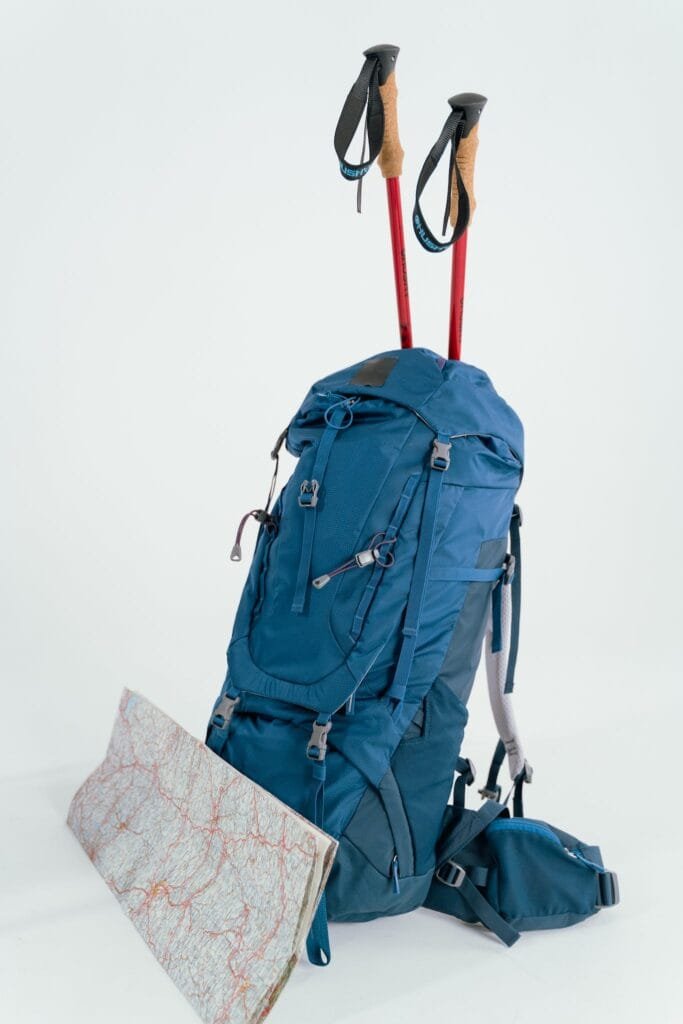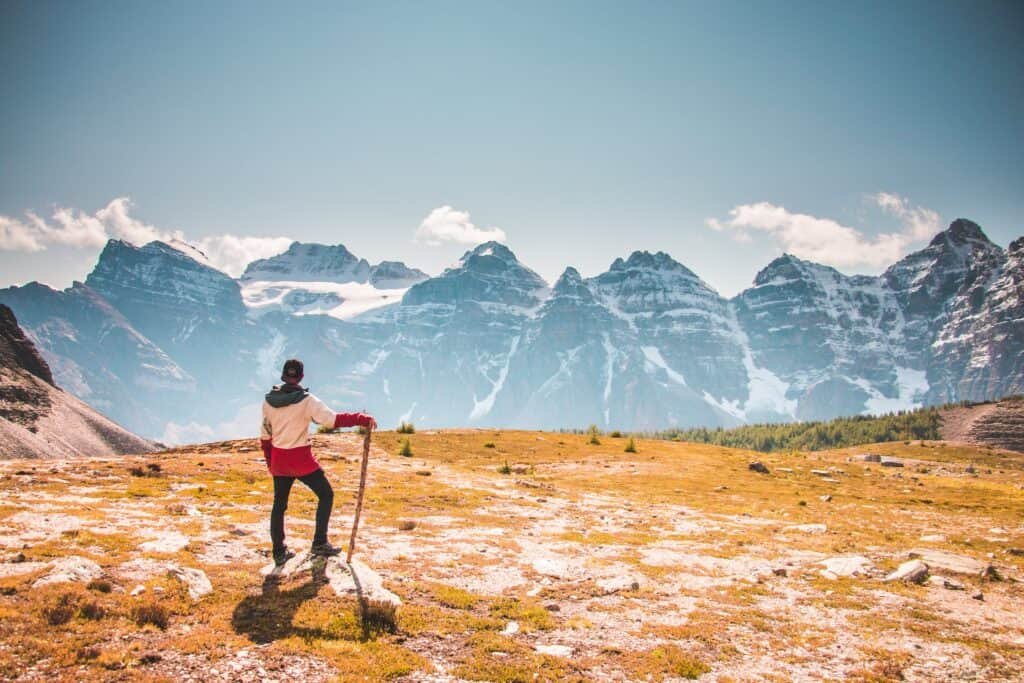Tips and Guide On Planning A Hiking Trip

Picture yourself standing at the trailhead, ready to embark on an unforgettable hiking adventure. With these tips for planning a hiking trip, you’ll be prepared for whatever the great outdoors has in store.
Embarking on a hike is an occasion to test yourself, free your thoughts, and witness the beauty of nature. But as any seasoned hiker knows, preparation is key to a successful hike.
In this comprehensive guide on How To Plan A Perfect Hiking Trip, we will cover essential topics such as choosing the right trail, packing necessary gear, staying safe during changing weather conditions, knowing your limits, and staying hydrated throughout your journey.
Whether you’re a beginner hiker or an experienced outdoor enthusiast looking to refine your skills further – these tips for planning a hiking trip are designed with every adventurer in mind. So lace up those hiking boots and let’s dive into planning that perfect trek!
1. Choose the Right Hiking Trail

First things first, let’s talk about picking the perfect trail for your hiking adventure.
To ensure a safe and enjoyable experience before you start hiking, it’s crucial to understand the terrain, difficulty level, and length of the trail you’re considering.
AllTrails is an excellent resource for finding detailed information on various trails, including user reviews and photos.
Terrain Features
Consider factors such as elevation gain, steepness of hills, or rugged terrain when choosing a trail that suits your fitness level and preferences.
Difficulty Level
Hiking paths are frequently ranked by difficulty (simple, moderate, or tough), which can aid you in determining if it’s suitable for novice hikers or those searching for more demanding hikes.
Trail Length & Time Commitment
- If you’re new to hiking or short on time, opt for shorter trips like day hikes rather than longer backpacking excursions.
- Aim to start with well-maintained trails in popular areas like national parks before venturing into remote locations with difficult terrains.
Picking Your Perfect Trail
- Determine your fitness level: Be honest about what you can handle physically so that you don’t overexert yourself during your hike.
- Select a destination: Consider travel tips from fellow outdoor enthusiasts who have experienced similar hikes; this will give insight into potential challenges and highlights along the way.
- Gather information: Research trail conditions, weather forecasts, and any potential hazards before embarking on your hiking trip.
Once you’ve decided on the ideal trek for your hiking journey, it’s time to begin getting ready.
In the next sections of this guide, we’ll cover essential gear-packing tips and other important considerations for a successful hike.
2. Pack Essential Gear

Alright, let’s talk gear.
For a successful journey, packing the correct equipment is vital for both your safety and pleasure.
No worries though – I’ve got you covered with this list of must-haves:
- A map and compass: These are essential tools for navigating the great outdoors. Check out REI’s guide on topographic maps if you’re new to using them.
- First-aid kit: Accidents happen. Be prepared with a well-stocked first-aid kit. Need help assembling one? Here’s an excellent National Park Service resource on ten essentials.
- Flashlight or headlamp: Don’t get caught in the dark without proper lighting. A reliable flashlight or headlamp can make all the difference when night falls unexpectedly.
- Water bottle and snacks: Staying hydrated and fueled up is key during any hike. Opt for reusable water bottles like these from Hydro Flask, and pack some energy-dense trail mix or granola bars as well.
- Clothing or Equipment suited to weather conditions: Your clothing should be comfortable, moisture-wicking, quick-drying, breathable fabrics that provide protection against sun exposure (like UPF-rated clothing), rain, and wind. If staying overnight, make sure to bring necessary equipment like a tent, sleeping bags, sleeping mat, etc.
Now that you’ve got the basics covered, let’s dive into some additional items to consider:
- Hiking boots or shoes: Invest in a quality pair of hiking footwear that provides support, protection, and traction on various terrains. Check out Outside Online’s top picks for hiking boots.
- Trekking poles: These can be a game-changer when tackling steep hills or rugged terrain. Learn more about their benefits from this informative REI article on trekking poles.
- A well-fitted hiking backpack: Choose a comfortable backpack with ample storage space for your gear. Consider factors like size, weight distribution, and accessibility when selecting one.
Remember: packing smart is essential for an enjoyable hike.
Key Takeaway:
When planning a hiking trip, packing the right gear is crucial for safety and enjoyment. Essential items include a map and compass, a first-aid kit, a flashlight or headlamp, a water bottle and snacks, and weather-appropriate clothing. Additional items to consider are quality hiking footwear, trekking poles for steep terrain, and a well-fitted backpack with ample storage space. Remember to pack smart for an enjoyable hike.
3. Check Weather Conditions

To ensure a safe and enjoyable hike, be sure to take into account potential weather conditions by consulting reliable sources. That’s why checking the weather forecast is a must-do before hitting the trail. The National Weather Service and AccuWeather are great resources to get accurate and up-to-date information about what to expect during your hike.
Why It Matters
The right weather conditions can make or break your hiking experience. A sunny day with clear skies will allow you to fully enjoy the beauty of nature, while unexpected rain or snow could turn a pleasant trek into a challenging ordeal.
What To Look For
- Precipitation: Rain, snow, sleet – these elements can impact visibility and make trails slippery or muddy. Pack waterproof gear if needed.
- Temperature: Dress appropriately for both daytime highs and nighttime lows so that you stay comfortable throughout your trip.
- Sunrise & Sunset Times: Plan accordingly so that you’re not caught off-guard by darkness descending upon the trail when you least expect it.
- Hazardous Conditions: Be aware of potential hazards such as thunderstorms, high winds, flash floods – anything that could pose risks during your hike. Stay safe out there.
Pro Tips
Don’t just rely on one weather source – cross-check multiple forecasts to get a more accurate picture of what’s in store for your hike. Keep an eye on trail conditions and closures, as well as any alerts or advisories from national parks or local authorities. Last but not least, always have a backup plan. If the weather takes a turn for the worse, be prepared to change your route or postpone your trip altogether. Safety first.
4. Know Your Limits

Embarking on a hiking trip is thrilling, but it’s crucial to be realistic about your abilities.
Despite not being an expert hiker, it is still possible to enjoy the great outdoors. Let’s discuss some tips for understanding and respecting your limits while hitting the trails.
Assess Your Fitness Level
Hiking can range from leisurely strolls in national parks to challenging treks up steep hills or rugged terrain. To avoid overexertion, choose a trail that matches your current fitness level and gradually work up to more difficult hikes as you gain experience.
Start with Shorter Trips
If you’re new to hiking, it’s wise not to jump into longer hikes right away. A short hike will help familiarize yourself with essential hiking gear and allow you time for adjustments before tackling extended backpacking trips.
Wear Appropriate Footwear
Your feet are doing most of the work when hiking, so invest in proper footwear like quality hiking boots or shoes. Avoid wearing running shoes as they may not provide enough support or traction on uneven surfaces – trust me; this makes all the difference.
Listen to Your Body
Pay attention to your body’s signals while on the trail. If feeling fatigued, pause to nourish with a snack such as a trail mix or something similar. Remember that it’s okay to turn back if you feel unwell or if conditions become too challenging – there’s always another day for hiking.
Bring a Hiking Buddy
Hiking with a buddy not only makes the experience more enjoyable but also provides an extra layer of safety in case of emergencies. Your fellow hikers can help assess trail conditions and offer support when needed – plus, they make great company during those long walks.
In summary, knowing your limits is essential for having safe and successful hiking experiences. Being aware of your abilities, taking on shorter journeys initially, donning proper shoes, heeding your body’s signals, and bringing along a companion are key to having a safe and enjoyable hike.
Key Takeaway:
To plan a perfect hiking trip, it’s crucial to know your limits and assess your fitness level. Start with shorter trips, wear appropriate footwear, listen to your body, and bring a hiking buddy for extra safety and support – these tips will help you have safe and successful hiking experiences.
5. Stay Hydrated

Let’s talk about hydration, folks.
Staying hydrated is crucial for a successful and enjoyable hiking experience. No one wants to feel like a dried-up sponge on the trail, right?
The answer varies depending on factors such as temperature, humidity levels, altitude, and individual needs.
- As a general rule, for moderate exercise in average conditions, consume roughly half a liter (17 ounces) of water per hour.
- In hotter climates or during more strenuous activities like steep hills and rugged terrain, aim for closer to one liter (34 ounces) per hour.
- Pay attention to your body and make changes as needed.
Remember, it’s better to drink small amounts of water frequently rather than chugging a large amount at once. This helps your body absorb the water more efficiently and reduces the risk of overhydration (yes, that’s a thing).
What About Electrolytes?
- To keep your electrolyte levels balanced while on the trail, consider packing some electrolyte supplements, sports drinks, or even salty snacks like pretzels or trail mix.
In conclusion, staying hydrated is not only essential for maintaining energy levels but also for preventing heat-related illnesses such as heat exhaustion or heatstroke. So go ahead – take a sip from that water bottle right now. Cheers to happy trails.
FAQs in Relation To Planning A Hiking Trip
How do I plan a good hiking trip?
To plan a good hiking trip, choose the right trail based on your fitness level and interests, pack essential gear, check weather conditions, know your limits, stay hydrated, and research local regulations and permits required. Also, consider factors like transportation to the trailhead and potential hazards along the route.
What are the 7 tips for hiking?
- Pick an appropriate hike for your fitness level
- Wear proper footwear and clothing
- Bring plenty of water and snacks
- Tell someone about your plans before you go
- Navigate using maps or GPS devices
- Maintain a steady pace with breaks as needed
- Familiarize yourself with Leave No Trace principles to minimize the impact on nature.
What are the basic hiking skills?
When it comes to hiking, three basic skills are essential for a successful and enjoyable experience. First, navigation skills are crucial to interpreting trail maps, using a compass, and identifying landmarks to stay on track and reach your destination safely. Second, physical fitness is vital as hiking often involves traversing uneven terrain, steep slopes, and long distances. Building stamina, strength, and endurance through regular exercise and training will enhance your hiking abilities. Lastly, understanding basic outdoor survival skills is important, including knowing how to start a fire, set up a shelter, find and purify water, and administer basic first aid. These skills will ensure you can handle unexpected situations and emergencies while on the trail.
What is the best schedule for hiking?
Planning a hiking trip requires careful consideration of several factors to create the best schedule. Start by researching the destination’s climate and weather patterns to choose a favorable time of year. Begin your hike early in the day to make the most of daylight, avoid potential afternoon storms, and allow ample time for rest breaks. Keep track of sunset time to ensure you finish hiking before darkness falls. Finally, tailor your schedule based on personal fitness level, trail length, and flexibility to adapt to unforeseen circumstances. By following these guidelines, you can optimize your hiking schedule for a safe and enjoyable adventure.
Conclusion
Planning a hiking trip can be an exciting and rewarding experience, but it’s important to take the necessary steps to ensure your safety and enjoyment. By following these tips and guides on how to plan a perfect hiking trip, you’ll be well-prepared for whatever adventure lies ahead.
- Choose the right hiking trail that suits your skill level.
- Pack essential gear such as proper footwear, water bottles, and a first aid kit.
- Check weather conditions before leaving home.
- Know your limits and don’t push yourself too hard.
- Stay hydrated throughout the hike by drinking plenty of water or other fluids.





